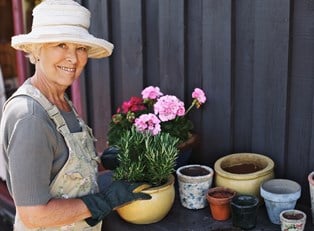A vegetable garden is a fun and exciting project to start in your yard. It can provide food during the growing season and teach children about nature. It is important to start a garden the right way for the best results. Several tips will help you to start a successful first vegetable garden.
Pick the Right Plants
You need to choose plants that can grow in your zone, in the sunlight you have in your garden, and in the space you have. Any gardener can tell you your growing zone. Choose vegetables that are hardy in this zone. Measure how much sunlight hits the different parts of the garden. If you have six or more hours of direct sunlight, then that means full sun. Between four and six hours means partial sun. Less than four hours is full to partial shade. Choose plants for the areas that match the sunlight available. Make sure the width and height of the grown vegetables will fit easily in the garden space. Finally, buy seedlings and not seeds for you first garden.
Create a Plan
You should draw out a small map of the garden including where each plant will go. Use precise measurements to make sure the plants do not crowd each other. Remember that taller plants will likely cast shadows during the day and could block direct sunlight. You should leave some space for walkways every three to six feet as well so that you can move between the plants. You can use wooden stakes and twine to mark out the design in the actual garden.
Prepare the Soil
You need to prepare the soil before planting any seedlings. You should use a tiller, a shovel or a hoe to turn the top six to eight inches of soil. You should buy a bag of fertilizer that has a 5-5-5 nitrogen, phosphorous and potassium (NPK) balance. The NPK is the ratio of nutrients in the fertilizer. You want a balanced NPK ratio that is not too high in order to avoid problems. The fertilizer should be mixed in with the soil while you are turning it. Turning the soil is important because it allows air to reach the roots and provides good drainage.
Planting and Watering
The next step is to plant the seedling according to your plan. Remember to leave extra space around each plant so nothing is crowded and the vegetables do not have to compete for resources. Seedlings that are tipping over might need to be tied to a small stake with some twine to keep them from resting on the ground and rotting. The entire garden should be watered thoroughly once everything is planted.
Daily Garden Care
The final step is to care for the garden every day. You should check for new weeds between the plants every day or two. Pull them up and throw them away if you find them. You should start looking for pests under leaves, on the ground, and on stems. Pull these pests off with your fingers and drop them in a buck of soapy water. Water the garden daily as needed and check the soil beforehand to make sure it is not too wet or too dry especially after rainstorms.



